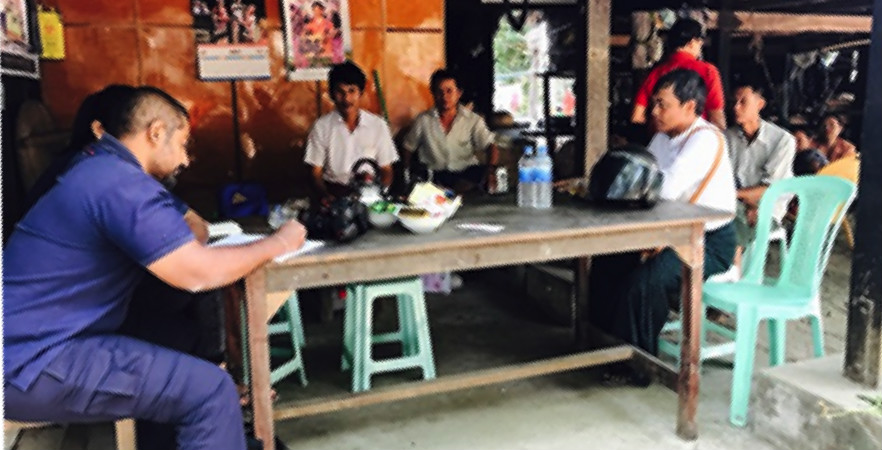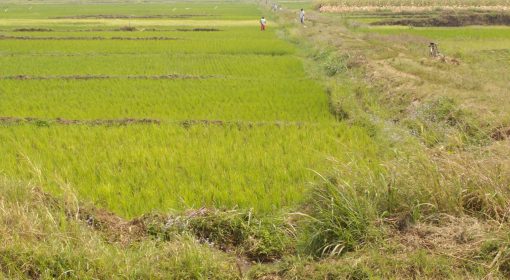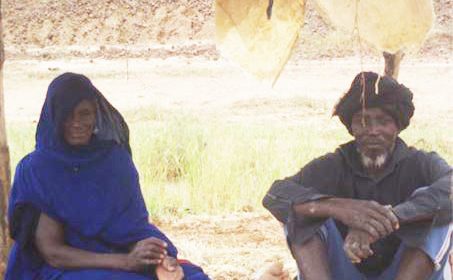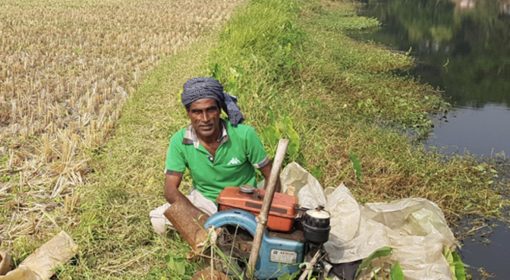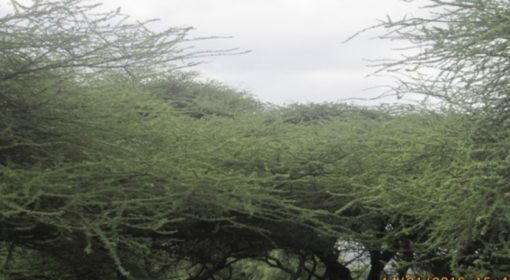Rice growing in the water
Blogpost by: Palal Moet Moet
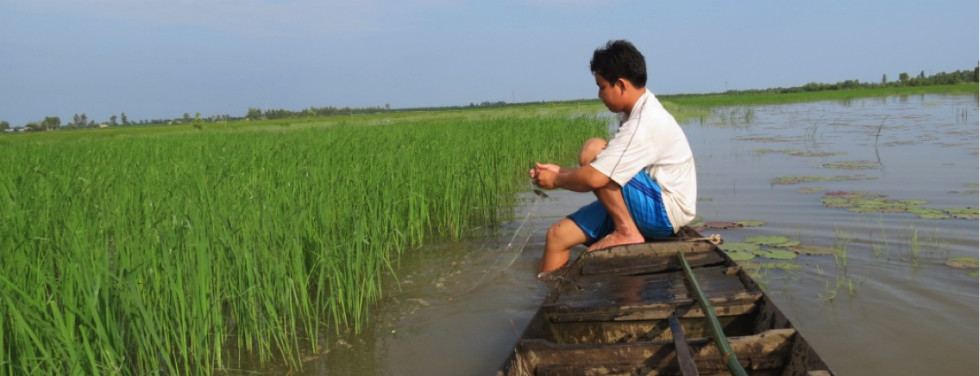
Do you know how to sow rice in deep water? In the soil – of course: ultimately all plants have to be rooted in soil. But what I want to describe is floating rice (FR) which is a range of traditional rice varieties adapted to large changes in flood water levels that occur during the rainy season. Can you believe if I say floating rice can elongate to 3 to 4 meter? Sounds like a miracle? You can search it in Rice museum of International Rice Research Institute. And there, you will find the world highest floating rice which is almost 4 meters, keeping pace with the rising water levels in the part of the flood plains.
I have met with another farmers who used to plant floating rice, in Bogale village at Ayeyarwady Delta region. They said, “We planted floating rice during the raining season before, but now we only focus on summer rice which gets high yield and high prices. We don’t plant floating rice anymore not because of higher flood depths or flood water levels. The reason is, if we plant floating rice in raining season, there is not enough time for preparing summer rice and to do the ploughing, harrowing and land leveling as floating rice are long duration varieties almost 6 months. Another thing is also long and hard stem, with crop residuals being hard to remove. And you also know that these traditional varieties are low yield and low market price but we can still use the floating rice as cattle feed. People are not so keen to eat floating rice as the grain is hard, with little taste and smell. So we no longer plant in rainy season but for our subsistence we raised some ducks and selling eggs, not commercial farming. Some farmers work as a daily employment at other field and some others migrate to the cities to get some jobs. Some of them, however, come back in summer season and do rice farming.” Moreover, now the government is promoting high yielding varieties and hybrids to meet the target of production and go for export throughout the world.
But these varieties are only good at favorable conditions and not work in either low lands or flood plain areas. Farmers from Ka Toke Ka Ma village said that they have been planting floating rice for a long time, start from having the fields after making embankment. Before these areas were just a water plain and nothing could grow there. We tried to make small embankments but this was not useful. These areas are like a basin and during rainy season floods at high levels are going to happen. For them, they don’t have so much choice for cultivation except floating rice. Farmers’ livelihood in flood areas have many difficulties and they struggle for their survival. What can we do for their livelihoods? Do you think that we need to consider about the situation of their life or just skip because of small group? It is possible to improve their life by improving floating rice in quality and creating international market.
Here are some answers for these questions and some main point of floating rice to consider a pity of disappearing as floating rice is very nutritious and forms good habitat for fish. It is purely organic food which has high vitamin E, in fact five times higher than high yielding varieties. This acts as an antioxidant helping to protect cells from damage. Floating rice also has high protein and anthocyanin which are good for your health. It is not strange that you don’t know these things because even farmers who are growing this floating rice don’t have this knowledge. Moreover, floating rice create a good environment for aquatic animal and help to have many biodiversity of these animals. It is good for farmers’ health who rely on eating these aquatic animals as a part of daily food.
The world is changing fast – not only languages, animal species or special customs disappear: several crops, though they have a niche, go the same route too. But it should not be – rather than abandoning floating rice, we should see what we can do about it, do systematic research and select ways to improve it and at same time maintain its unique qualities – in nutrition and in adapting to a special niche.
